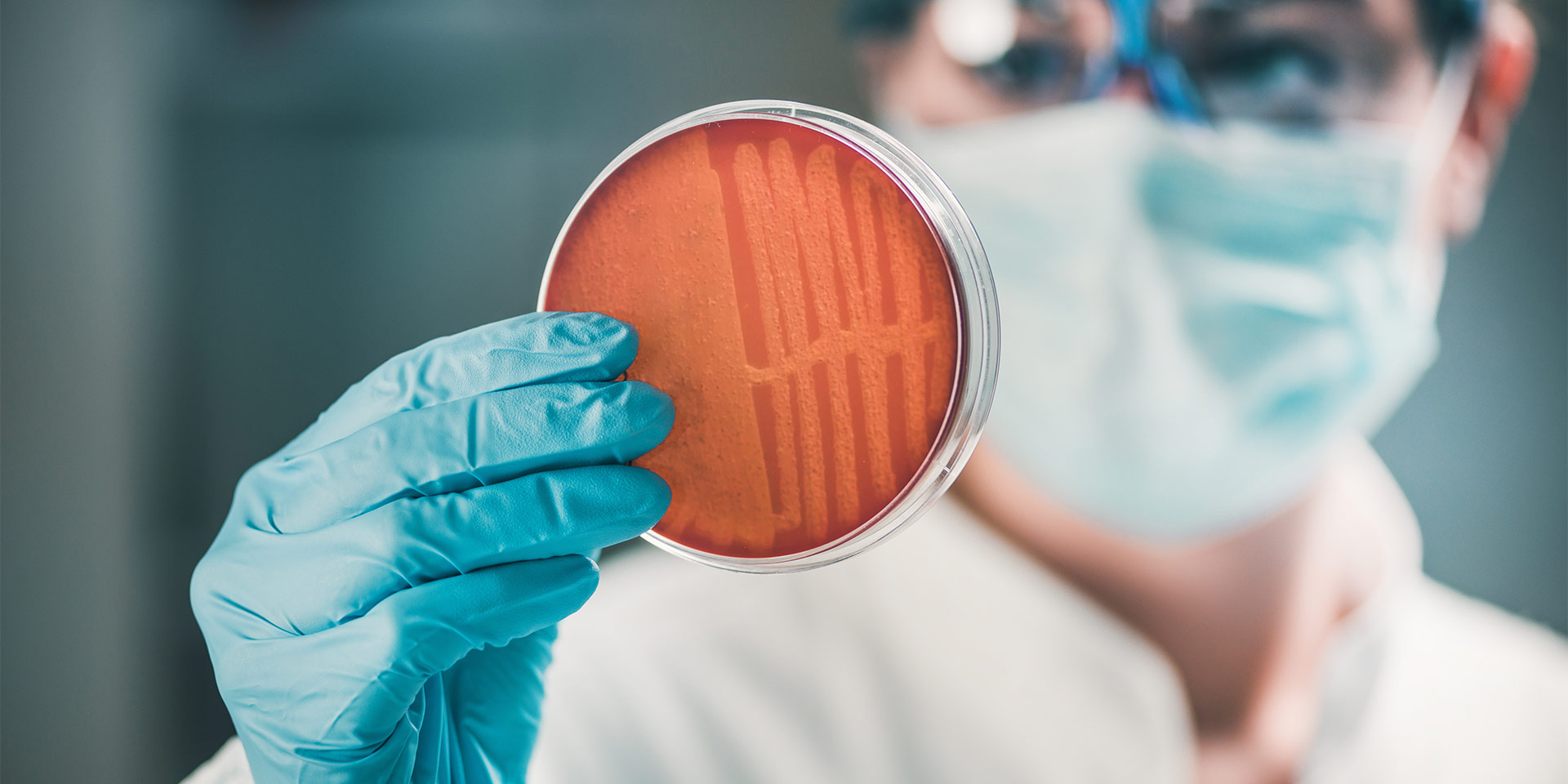The increased frequency with which doctors are encountering antibiotic-resistant bacteria is worrying. And it could affect an already precarious medical field—cancer treatment.
According to research published by the British project, Longitude Prize, about 41% of British oncologists report that they have experienced an increase in the number of drug-resistant infections in the last 12 months. Around 95% of them are concerned about the impact that “superbugs” have on their patients. And almost half of oncologists (46%) say that being infected with antibiotic-resistant bacteria could neutralise the effectiveness of chemotherapy in treating cancer.
Antibiotics are part of the daily medication of many cancer patients, as a way to prevent infection—the most common potential complication in their treatment. Many surgical procedures and even non-surgical cancer treatments weaken the immune system and thus expose patients to an increased risk of infection. The oncologists in the aforementioned study say that around 23% of their patients will contract a bacterial infection during treatment. One third of cancer patients are treated surgically, and about 5% of them will contract an infection with resistant bacteria, which can be life-threatening.
One hundred of the 900 oncologists working across the UK were interviewed for this research. Its sample therefore represents 1 in 9 clinical oncologists. By comparison, the General Medicine Omnibus survey interviews about 1,000 of the UK’s 40,000 GPs. The study is a candidate for a huge scientific competition. The Longitude Prize offers 8 million British pounds (invested by a British Lottery charity) to a research team that manages to make a groundbreaking contribution to an area of vital public health importance. The current research field, the prize for which will be awarded in 2022, was established by public vote, and won out over issues such as: treating dementia, treating the paralysed, inventing a non-polluting way of flying, ensuring a sustainable diet, and so on.
The public voted to award an initiative which created a test for bacterial infections that is inexpensive, accurate, and easy to use, or an innovation that helps prevent increased antibiotic resistance.
What is antibiotic resistance?
Antibiotic resistance occurs when an antibiotic has lost its effectiveness in stopping the growth of a bacterium. In other words, the bacteria become “resistant” and continue to multiply even when doses of an antibiotic that has been effective in the past are administered.
Some bacteria are naturally resistant to certain types of antibiotics. However, bacteria can become resistant in other ways as well: by genetic mutation, or by gaining resistance from another bacterium. “Superbugs” are those strains of bacteria that are resistant to most commonly-used antibiotics today.
Scientists now believe that genetic mutations—those spontaneous changes in the genetic material of bacteria—are rare. But when they do occur, they present a real challenge. Different genetic mutations produce different types of resistance. Some mutations allow bacteria to produce enzymes that inactivate antibiotics, while other mutations eliminate the cell’s target for the antibiotic. Other mutations close the “gates” through which antibiotics would enter the cell, and others create mechanisms for pumping antibiotics out of the cells, preventing the drugs from doing their job.
When and how did superbugs appear?
The first to speak publicly about “superbugs” was British physician Lindsey W. Batten. Batten was the first to warn that “we may be living the beginning of the end of the antibiotic era. We may run clean out of effective ammunition and then bacteria and moulds will lord it.” His view is 66 years old, stated in 1954, but the problem he described had already been around for almost a decade.
It all started with the large-scale production of penicillin during World War II. Penicillin was vital for treating infections on the war front, but once it became a widely used drug, the danger of training bacteria to become antibiotic resistance became obvious. In 1945, Nobel laureate Alexander Fleming said in his inaugural speech that “there is a real danger that the ignorant man will take a lower dose than necessary and, thus exposing his microbes to a non-lethal amount of the drug, make them resistant” to it.
Only a few years later, doctors began to discover the resistant strains of infection they had feared. The mechanism was simple: people had taken small doses of penicillin, which killed the most vulnerable bacterial strains. Several bacteria managed to develop mutations that made them partially resistant. These bacteria then multiplied and became more widespread.
A human battle against bacteria began, in which researchers were convinced that pharmacology would be able to keep up and manufacture ever new drugs to fight bacteria. Dr. Scott Podolsky, a physician and medical historian at Harvard Medical School, said that, at the time, the world was living an “unwavering optimism” that “we will always be one step ahead of bacteria.”
The statistics show that this was not the case. The U.S. Centers for Disease Control and Prevention warned last year that 4 people in the US die every hour from superbugs. Every year, 3 million people suffer infection from superbugs, and for 35,000 of them, such infections prove fatal. In Europe, the number of deaths reached 33,000.
More than 150 million antibiotic prescriptions are released annually in the United States alone. The consumption of antibiotics is constantly increasing worldwide, along with the global number of deaths caused by superbacterial infections. As many as 700,000 people die each year from antibiotic-resistant bacteria. A 2016 study found that superbugs are responsible for more deaths than those that were caused by Zika or Ebola.
What measures can be taken right now?
To counteract the resistance to superbugs, the World Health Organization (WHO) has called for the development of new antibiotics. According to the Organization, there are 50 antibiotics on the list of developing drugs that target specific pathogens, but they “bring few advantages over existing treatments and only two target the most resistant bacteria.” Only 8 of these new antibiotics are considered by the WHO to be truly innovative treatments, and thus useful in the fight against antibiotic-resistant diseases. But it will be several years before they are available, according to the WHO.
Therefore, the fight against superbacteria is also waged on alternative fronts. There is talk, for example, of therapy by alternating several antibiotics, taken by rotation, so that the resistant bacteria left after treatment with the first antibiotic can be killed by the next antibiotic. There are studies that have demonstrated the effectiveness of this method in vitro. Surprisingly, some researchers have proposed and demonstrated that some very old drug prescriptions can work successfully in treating resistant strains of bacteria. Another promising therapeutic method is one that uses bacteriophage microorganisms, viruses that infect bacteria. This method has already saved the lives of some patients who did not respond to antibiotic treatment, and volunteered to follow this new method of treatment.
Excessive or inappropriate use of antibiotics is not the only cause of the global threat we face, experts warn. The consumption of excess antibiotics in animals because of genetic manipulations in the process of food production is on the same level of concern. The WHO is working with these sectors to implement a comprehensive action plan to combat antimicrobial resistance by improving public awareness, educating consumers, reducing infections and encouraging the prudent use of antimicrobials. Specialists recommend the consumption of organic meat and dairy products from safe sources, where one can know that the animals were raised responsibly.
Encouraging information
Certain actions can speed up the appearance and spread of antibiotic-resistant bacteria:
-> The overuse or misuse of antibiotics
-> Poor infection prevention and control practices
-> Living or working in an unhealthy environment
-> Consumption of unwashed food
To protect yourself from harmful bacteria, wash your hands often with soap and water or use an alcohol-based sanitiser. Also, healthy living habits, such as maintaining a proper diet, washing food properly, exercising enough, and establishing good sleep habits, can minimise the risk of getting sick.
You can also help fight antibiotic resistance:
-> Using antibiotics as indicated by a doctor and only when it is necessary
-> Completing the full treatment course, even after you feel better
-> Refraining from giving antibiotics to another person
-> Refraining from taking the antibiotics left over from your prescription after finishing a treatment.
Alina Kartman is a senior editor at ST Network and Semnele timpului.














